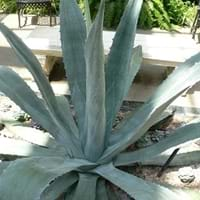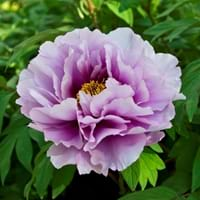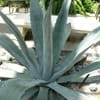Life Span
Perennial
Perennial
Type
Cactus or Succulent
Flowering Plants, Shrubs
Origin
Mid-Atlantic United States, Southeastern United States, Central United States, South-Central United States
Asia, North America, Southern Europe
Types
Not Available
Aristocrat, Buckeye Belle, Henry Bockstoce , Abalone Pearl, Coral Supreme, Cytherea, Charlie's White
Habitat
Desert, Hardwood forests, Hillside, Humid climates, Rocky Ridges, wastelands
Hillside, Woods
USDA Hardiness Zone
6-11
3-9
Sunset Zone
Not Available
A3, 1a, 1b, 2a, 2b, 3a, 3b, 4, 5, 6, 7, 8, 9, 10, 11, 12, 13, 14, 15, 16, 17, 18, 19, 20, 22
Habit
Rosette/Stemless
Clump-Forming
Flower Color
Light Green, Gray Green
Pink, Red, White
Flower Color Modifier
Not Available
Not Available
Fruit Color
Tan
Not Available
Leaf Color in Spring
Green
Dark Green
Leaf Color in Summer
Green
Dark Green, Green
Leaf Color in Fall
Green
Bronze, Dark Green, Green
Leaf Color in Winter
Green, Dark Green
Not Available
Leaf Shape
Long linear and narrow
Compound
Plant Season
Spring, Summer, Fall
Spring
Sunlight
Full Sun, Partial Sun, Partial shade
Full Sun, Part sun
Growth Rate
Not Available
Slow
Type of Soil
Loam, Sand
Loamy
The pH of Soil
Neutral, Alkaline
Neutral
Soil Drainage
Well drained
Well drained
Bloom Time
Late Spring, Early Summer, Summer
Spring, Summer
Tolerances
Not Available
Not Available
Where to Plant?
Ground, Pot
Ground, Pot
How to Plant?
Seedlings
Grafting, Seedlings, Stem Planting, Transplanting
Plant Maintenance
Medium
Medium
Watering Requirements
Average Water Needs, Does not require lot of watering
Does not require lot of watering, It cannot sustain wet-feet, Keep the ground moist but not water-logged, Needs watering once a week, Prefer drip-irrigation instead of Over-head watering, Water occasionally
In Summer
Lots of watering
Lots of watering
In Spring
Moderate
Moderate
In Winter
Average Water
Average Water
Soil pH
Neutral, Alkaline
Neutral
Soil Type
Loam, Sand
Loamy
Soil Drainage Capacity
Well drained
Well drained
Sun Exposure
Full Sun, Partial Sun, Partial shade
Full Sun, Part sun
Pruning
Remove damaged leaves, Remove dead branches, Remove dead leaves
Do not prune during shooting season, Prune to control growth, Remove dead or diseased plant parts, Remove deadheads
Fertilizers
All-Purpose Liquid Fertilizer
All-Purpose Liquid Fertilizer
Pests and Diseases
Red blotch
Botrytis Blight, Leaf spot, Stem spot, Viruses
Plant Tolerance
Drought
Not Available
Flowers
Not Available
Yes
Flower Petal Number
Single
Semi-Double
Foliage Texture
Bold
Coarse
Foliage Sheen
Matte
Glossy
Attracts
Not Available
Ants
Allergy
Skin irritation
Not Available
Aesthetic Uses
Showy Purposes
Beautification, Bouquets, Showy Purposes, Used for decorating walls, fences, gates, hedges, etc.
Beauty Benefits
Not Available
Not Available
Environmental Uses
Air purification
Air purification
Medicinal Uses
constipation, Gastrointestinal disorders
Cough, Gout, Headache, Heartburn, Kidney problems, Upset stomach, Urinary tract problems
Part of Plant Used
Leaves, Sap, Seeds, Stem
Flowers, Root, Seeds
Other Uses
Pulp can be used to make rope place mats and other goods, Used in making beverages
Showy Purposes, Used as Ornamental plant, Used for fragrance
Used As Indoor Plant
No
No
Used As Outdoor Plant
Yes
Yes
Garden Design
Container, Mixed Border, Rock Garden, Wall, Wildflower
Feature Plant, Foundation, Mixed Border
Botanical Name
MANFREDA virginica
Paeonia suffruticosa
Common Name
Century plant
Maguey
American aloe
Peony
In Hindi
अमेरिकी मुसब्बर
Peony
In German
amerikanischen Aloe
Pfingstrose
In French
américaine Aloe
Pivoine
In Spanish
Americana Aloe
Peonía
In Greek
Αμερικανός Αλόη
παιωνία
In Portuguese
americano Aloe
Peônia
In Polish
Amerykański Aloe
Piwonia
In Latin
American Aloe
AGLAOPHOTIS
Phylum
Not Available
Magnoliophyta
Class
Liliopsida
Magnoliopsida
Order
Asparagales
Not Available
Family
Agavaceae
Paeoniaceae
Clade
Angiosperms, Monocots
Angiosperms, Core eudicots, Eudicots
Tribe
Not Available
Not Available
Subfamily
Agavoideae
Not Available
Season and Care of American Aloe and Peony
Season and care of American Aloe and Peony is important to know. While considering everything about American Aloe and Peony Care, growing season is an essential factor. American Aloe season is Spring, Summer and Fall and Peony season is Spring, Summer and Fall. The type of soil for American Aloe is Loam, Sand and for Peony is Loamy while the PH of soil for American Aloe is Neutral, Alkaline and for Peony is Neutral.
American Aloe and Peony Physical Information
American Aloe and Peony physical information is very important for comparison. American Aloe height is 30.50 cm and width 35.60 cm whereas Peony height is 76.20 cm and width 61.00 cm. The color specification of American Aloe and Peony are as follows:
American Aloe flower color: Light Green and Gray Green
American Aloe leaf color: Green
Peony flower color: Pink, Red and White
- Peony leaf color: Dark Green
Care of American Aloe and Peony
Care of American Aloe and Peony include pruning, fertilizers, watering etc. American Aloe pruning is done Remove damaged leaves, Remove dead branches and Remove dead leaves and Peony pruning is done Do not prune during shooting season, Prune to control growth, Remove dead or diseased plant parts and Remove deadheads. In summer American Aloe needs Lots of watering and in winter, it needs Average Water. Whereas, in summer Peony needs Lots of watering and in winter, it needs Average Water.





